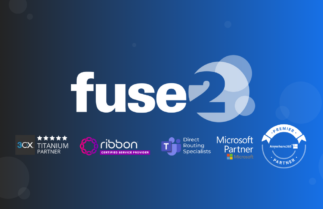
Most of us know there are many advantages to converging voice calling with Microsoft Teams, such as user experience, efficiency, the retirement of legacy equipment and access to new features. However, many companies using Teams today haven’t yet made or received external phone calls using the platform.
So, why aren’t some businesses integrating telephony with Teams?
- Microsoft calling plans are too expensive as the number of users grows.
- Billing is per-user, rather than utilising the familiar concept of shared “outside lines.”
- It’s difficult to transfer (port) existing telephone numbers to Microsoft Teams.
- As Microsoft is new to telecoms, there isn’t much trust when handling important customer sales or support calls.
- Minimal options for true failover, disaster recovery and business continuity
- Recording and call reporting options are basic and lack a lot of compliance requirements that many businesses have.
- Integrating an existing contact or call centre can be complicated, so businesses end up with multiple platforms that don’t work well together.
How can Direct Routing help?
- When your service provider adds direct routing to your Teams environment, you can access low call rates and flexible tariffs to suit business and customer geographies, rather than a “one-size-fits-all approach.”
- As every user won’t be making external phone calls simultaneously, you can reduce costs further by sharing call capacity rather than oversubscribing, similar to what is possible with PBXs using ISDN or SIP Trunks.
- Service Providers have porting arrangements in place with competitors and years of experience to simplify number transfer between companies.
- Service Providers often specialise in communications, rather than trying to be a “one-stop-shop”, so ensure “Quality of Service” for voice is their highest priority.
- As Direct Routing manages the call traffic outside of the Microsoft environment, it’s easy to keep connected with customers and handle Teams outages or internet problems by failing over calls to different numbers, phone systems or mobiles.
- Telecommunication providers already have extensive reporting and compliant recording capabilities, so you don’t need to compromise by accepting limitations.
- Call and contact centres have been around for years. Direct Routing gives businesses an excellent opportunity to combine the great collaboration capabilities of Teams with a powerful platform to manage customer communications with much tighter integration and control.
Is it difficult to set up Direct Routing?
The short answer is no. Direct Routing Service Providers invest heavily in rigorous testing and compliance, ensuring that network integration is reliable and intuitive.
All of this is done “behind the scenes” by the Managed Service Partner, so there is very little for the Microsoft administrator to worry about. The service is usually cloud-based, like Teams itself, so there is no need to install new hardware or worry about appliance configuration.
How do you get started?
It’s easy. Just get in touch with an accredited Direct Routing Service Provider, like Fuse2, who will quickly understand your current setup, what you need from Teams and your broader telephony requirements that need to be accommodated.
It’s worth thinking about all the different ways your customers contact you that you would like to be converged into a seamless user experience, such as Facebook, Twitter, Webchat and, of course, the traditional SMS and phone call.
Find out more about how Direct Routing and Anywhere365 can help your Microsoft Teams environment become integral to your customer contact and communications strategy.






